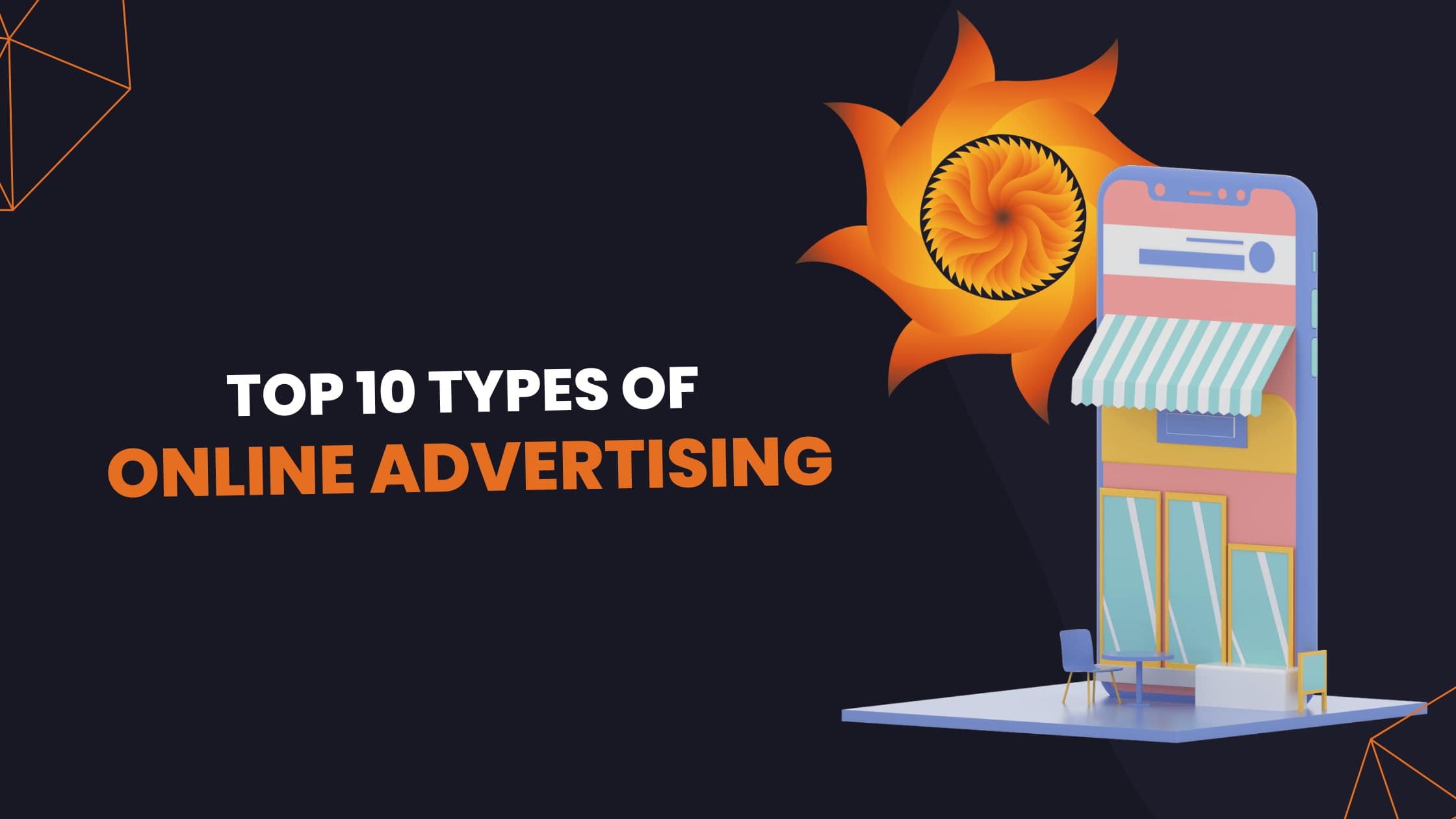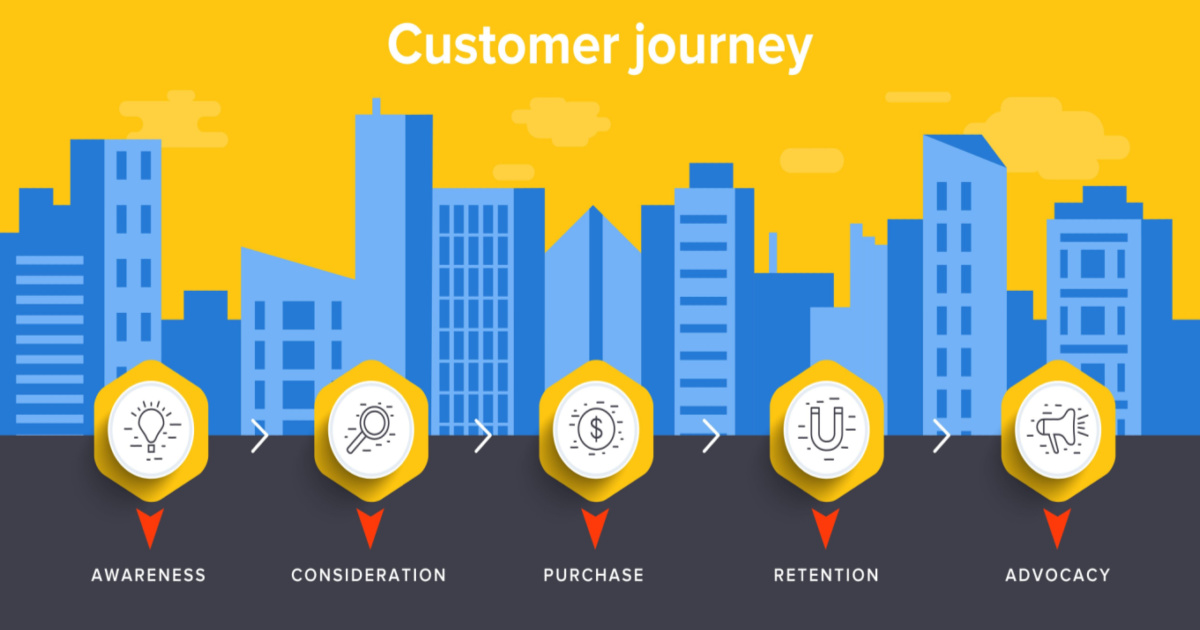Online advertising refers to the utilization of the internet for communicating marketing messages to a target audience. With the evolution of the internet, online advertising options have also evolved. Today, several types of online advertising are in use that your business can blend into the grand digital marketing strategy.
Since its inception about a half-century ago, internet use has grown rapidly. It has reached over half of the world’s population in the last two decades, accounting for billions of active users. With such a massive user network, the internet has become a prevalent means of advertising. This blog will show you the best online advertising options to help your business grow exponentially. So, let’s get started!
What is Online Advertising?
First thing first, let’s understand what online advertising is. It is clear from the name itself online advertising is a marketing approach that utilizes the internet as a channel for promotions.
On different internet-based platforms, you see hundreds of sponsored ads in the form of images or videos. And more often, you don’t even realize that it is paid content. It means an online ad can appear on a web browser, an application, search engine, social media platform, or email, irrespective of the devices you use.
An advertiser has the power to advertise almost everything on the internet. You can promote products, services, websites, events, brands, etc. The only condition is the thing you are advertising should be legal in a particular territory.
Why is Online Advertising Important?
As we discussed earlier, the number of active internet users is increasing by the day. As a result, it makes internet marketing necessary for businesses to reach more people, increase their brand value, and widen their clientele. To understand why different types of online advertising are important, let’s look at the benefits of online advertising.
Benefits of Online Advertising
1) Wide range of audience
With roughly five billion internet users, the internet is the best platform to advertise your offerings. Even if you are into a very niche business, you can find your audience through internet advertising and reach them at the right place and at the right time. Besides, online advertising does not only help you to get new customers but also to follow up with prospects and tap your existing customers for the latest offers and long-term business.
2) Better targeting
Despite an enormous user base, it may not be easy for every advertiser to reach the exact audience. However, the growth and innovations in internet technology, especially data-based techniques, have resulted in finding your prospective customers conveniently. You can easily segment users by their interests, locations, age, gender, search history, and several other criteria that help you create your ideal customer profiles to target and increase your conversion rates.
3) Better engagement
You may get a considerably large audience when you advertise via television, newspapers, magazines, or billboards. However, have you thought about how many viewers of such ads actually want to buy your product or service? On the other hand, online advertising tools give you a free hand to reach people who are already looking for offerings similar to yours. Besides, internet marketing encourages prospects to engage with the ads. They follow the call to action to know more about your brand, fill in forms, compare features, etc.
4) Analytics & forecasts
One of the crucial factors that work in favor of online advertising is analytics and forecasting. No orthodox advertising media has such power to manage numbers as digital advertising. With the available different types of online advertising tools, you get the control to analyze ads efficiently and optimize them for a better conversion rate. You can view the reach of your ads for a given budget, check total interactions, measure conversions, track engagements, and much more.
5) Cost effective
In comparison to offline advertising, online ads are way cheaper. With advantages like a broad audience, high engagement, precise targeting, and professional analytics, the low cost of online advertising becomes vital for small and medium-sized businesses.
Top-10 Types of Online Advertising for Your Business Growth
Pay Per Click (PPC) Advertising
Pay-per-click or PPC is one of the most used types of online advertising. In these ads, the advertiser pays for the number of clicks users make on an ad. Essentially, you are directing users into your sales funnel based on the ad’s call to action (CTA), which may be a sign-up form, landing page, or website.
PPC is one of the favorite advertising types because you only have to pay money when a user interacts with your ad. And even the cost becomes trivial as a click can be worth significantly more. For instance, suppose a click costs you $2.5 and leads a user to your website who makes a sale of $500. Well, you get your profit! However, the cost of a click depends on the auction between advertisers. Google Ads & Bing Ads are some popular PPC models.
Video Advertising
An ad in the form of a video is the most effective for users. The reason is simple; it is highly entertaining and engaging. Generally, video ads run on video-sharing platforms like YouTube and social media platforms like Facebook. The cost of these ads may vary as per the total views.
Being a primary platform for video content, YouTube has the most number of video ads running. There are two types of ads on YouTube, TrueView In-Stream ads, where a viewer can skip these commercials after a few seconds of play. And In-Stream ads that a user has to watch without skipping.
Video ads on YouTube are pretty cost-effective. And even if somebody skips your ads, at least you get a little brand exposure. However, for TrueView In-Stream Ads, a viewer can ignore them in five seconds. So, it becomes hard to build a connection in that short time.
Social Media Advertising
Social media has become incredibly important in our everyday lives. There were over 4.5 billion active social media users in January 2022, with around 3 billion on Facebook alone. With such a large audience, keeping social media out of your marketing scope can damage your business.
Social platforms like Facebook, Instagram, TikTok, LinkedIn, Twitter, etc., offer a tremendous reach to promote your products and services. Besides, you also receive good analytical tools that help assess the campaign performance and optimize it for better results.
Display Advertising
Display ads generally contain branded images, videos, or graphics published in specified places within a third-party website, like a listing website or a blog. You might have seen such ads several times.
Google Display Ads is the broadest display ad network that allows you to place your assets on over two million websites and apps. These ads are most efficient when you target the people who are already familiar with your products or brand.
While placing display ads, it’s necessary to consider the buyer journey and its stages. You don’t want to attract paid web traffic that fails to convert into your customers due to the poor UI/UX of the website or landing page. Display ads cost you by cost-per-click (CPC) or cost-per-thousand-impressions (CPM).
In-App Advertising
Mobile phones (or as called smartphones) are the most used personal devices. And on average, about 90% of a user’s mobile time goes into mobile apps. So, in-app advertising makes good sense to promote any product or service.
When people use mobile apps, their focus on the smartphone screen is relatively high. So, if an ad pops up in front of them at that time, the chances of conversion or ROI increase many times. Google AdMob, a platform for mobile advertising, lets app developers display ads in different formats that you can create through Google Ads. Besides, running an in-app ad campaign allows you to use several PPC benefits, like geotargeting & demographic targeting.
Retarget Advertising
Consistency is the core of success. And the same is true for marketing and advertising campaigns. Appearing often in front of your existing customers and interested prospective buyers with the solutions to their problems can yield desired outcomes. In addition, retargeting or remarketing campaigns show your ads to people who have visited your website.
These types of online advertising campaigns are compelling for brand awareness and sales. For example, when a user visits your website, a retargeting campaign cookie linked to that user tracks the pages he visits and the products he checks. And when the user visits other websites, your ads appear on the designated spaces of those websites, convincing users to choose your offerings.
In general, retargeting ads perform better than regular banner ads. From popular search engines such as Google to social media platforms like Facebook, you can use remarketing campaigns to acquire new customers.
Search Advertising
A search query on Google contains various keywords. When you hit the search button, the results appear. However, on top of the search engine result page (SERP), the first few results are generally paid results. These are the search ads that appear before organic results based on matching keywords selected by advertisers. Search ads become crucial because people often anticipate that the top results will be more helpful.
These ads work on the PPC model, and you can manage them through the Google Ads platform, where you can bid on keywords, create ad text, set budgets, etc. These ads work on keywords that are either one word or a phrase. Search ads also enhance their capabilities by targeting demographics & locations.
Email Advertising
Emailing has been in practice for quite a while now. And advertising or marketing through email is also a familiar concept. However, email advertising has come up with renewed effectiveness. And all credit goes to email automation tools that have made high conversions possible.
You can send your email ads to an enormous user base with webmail services. And these ads are efficient for acquiring new customers and holding existing customers by sending them updates, discounts, offers, and other promotional messages.
Email ads generally include an image containing all the information with minimal text. It is a common practice because you do not want to bore the readers with lengthy texts. And these are probably among the cheapest ads available.
Mobile Web Advertising
As we discussed earlier, billions of mobile phone users have active internet connections. And hence, it has become the most accessible means to communicate with any person. Therefore, in addition to in-app mobile ads, mobile web ads allow marketers to address the potential audience via smartphones.
Today, almost every website tends to be mobile responsive. So, an ad can reach mobile users by adjusting their screen size. Therefore, these ads fit perfectly on a website as if they were a part of it. Besides, mobile web ads are also easy to manage and cost-effective.
Native Advertising
In native advertising, your ads fit the look and feel of the media content with the web page where they appear. They don’t really look like ads, unlike banner or display ads that sometimes disrupt the UI of a page. It is one of the best features of native advertisements that make the user experience flawless.
On websites, these ads often appear as recommendations and as part of your news feed on social media platforms such as Facebook & Twitter. On a search engine like Google, native ads may appear on the top or sidebar for your Google search results. If you are sure about the target audience, messages, media, and the goal of a native ad, it is easy to create them using a headline, thumbnail image, description text, URL, etc.
The Final Word
With the number of internet users growing, the scope is online advertising is also extending, and so are different options. But the more options, the greater the confusion. When choosing an advertising option, the best way is to create ideal customer profiles and define a precise target audience based on them. Once you have your target audience, check your budget and research what method suits you best.
If you need any professional advice, we are here for you. With years of experience in lead generation and business development, we can be your permanent guide. Contact us for more details.









0 Comments